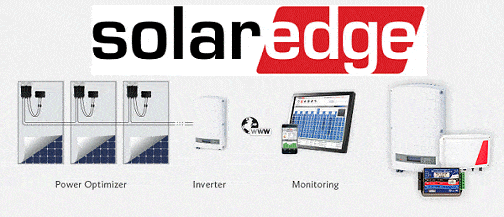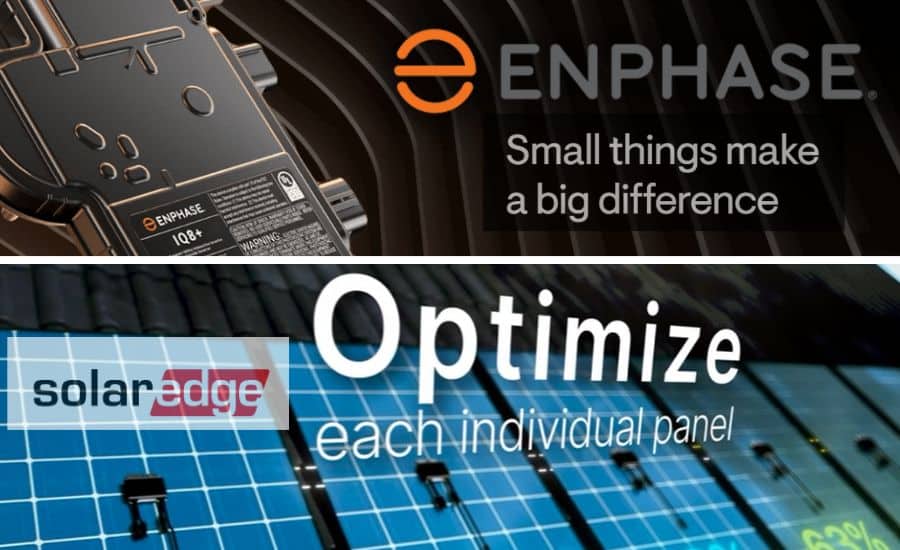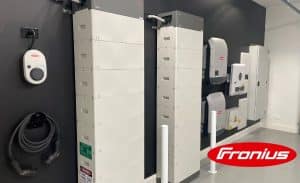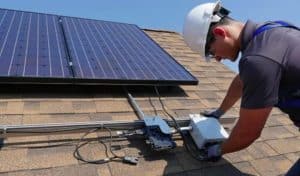Choosing the right solar inverter brand is crucial for Australian homeowners embarking on their solar journey. Two leading contenders, SolarEdge and Enphase, offer distinct technologies and features, making the selection process even more critical. This comprehensive analysis delves into the intricacies of both brands, providing you with the necessary information to make an informed decision based on your specific needs and budget.
Understanding inverters: The heart of your solar system
Before delving into the specifics of each brand, it’s crucial to understand the role of an inverter in a solar power system. Inverters convert the direct current (DC) electricity generated by your solar panels into the alternating current (AC) electricity used in your home and appliances. They are the brains of your system, optimising energy production and ensuring efficient utilisation.
Use our easy-to-use solar power and battery storage calculator to determine the size of your solar system with storage or even an EV charger! Our solar calculator will generate performance information and potential savings.
We can send this information to 3 trusted local installers in your area to receive obligation-free solar quotes.
Find out how much you can expect to pay for solar
Ready to find out more? Get FREE quotes for solar, batteries + more
*Prices quoted are to be used as a guide only and do not factor in state and other rebates and incentives. Includes STC discount.
Microinverters, string inverters and power optimisers: The core differences
➢ String inverters handle the entire string of solar panels as a single unit. While cost-effective, they offer limited monitoring and performance optimisation at the individual panel level. The entire string’s output can be affected if one panel underperforms due to shading or debris.
➢ Microinverters are attached to each solar panel, independently converting DC power to AC. This granular control enables maximum power production from each panel, regardless of shading or other factors. Additionally, microinverters provide detailed monitoring of each panel’s performance, allowing for swift identification and troubleshooting of issues.
➢ Power optimisers are Module-Level Power Electronics (MLPE) types that work with string inverters to maximise energy harvest from individual solar panels. Unlike micro-inverters, which convert DC power to AC power at the panel site, power optimisers condition DC and deliver it to a string inverter. System efficiency is increased by using this method instead of using a string inverter alone. Power optimisers can also monitor the performance of individual solar panels and provide better protection against partial shading.
How do Enphase and SolarEdge work?
Both Enphase and SolarEdge are based on panel-level optimisation, which means that each solar panel has its own device that maximises its output and monitors its performance. This differs from conventional string inverters, which connect all the panels in a series and send the DC power to a central inverter that converts it to AC. The problem with string inverters is that if one panel is shaded, dirty, or faulty, it will affect the whole string and reduce the system’s overall output.
Enphase
Enphase uses microinverters, which are small inverters attached to each panel’s back. They convert the DC power from the panel to AC power, which is then sent to the switchboard. This means that each panel operates independently and produces the maximum possible power regardless of the conditions of the other panels.
SolarEdge
SolarEdge uses power optimisers, devices also attached to the back of each panel. They optimise the DC power from the panel and send it to a central inverter, which converts it to AC power. The power optimisers communicate with the inverter and adjust each panel’s voltage and current to maximise the system’s output.
What are the pros and cons of Enphase and SolarEdge?
Both Enphase and SolarEdge have many advantages over conventional string inverters, such as:
- Higher efficiency and performance, as each panel is optimised individually and not affected by the others.
- Greater flexibility and scalability, as panels can be installed on different roof orientations, angles, and sizes, and more panels can be added later if needed.
- Enhanced safety and reliability, as there is no high-voltage DC wiring or DC isolators, which can pose a fire risk if damaged or faulty.
- Improved monitoring and troubleshooting, as each panel can be tracked and controlled remotely via an app or a web portal, and any issues can be detected and resolved quickly.
However, there are also some differences and trade-offs between Enphase and SolarEdge, such as:
- Cost: Enphase is more expensive than SolarEdge, as microinverters are more complex and costly than power optimisers. The cost difference increases with the size of the system, as more microinverters are required. However, Enphase may have lower installation and maintenance costs, as there is no need for a central inverter or DC wiring.
- Warranty: Enphase offers a 25-year warranty on its microinverters, the same as most solar panels’ warranty. SolarEdge offers a 12-year warranty on its central inverter, which can be extended to 20 or 25 years, and a 25-year warranty on its power optimisers.
Coming soon to Season 2 of Renovate or Rebuild
Jesse Raeburn owned the new Enphase IQ 5P battery and installed the Enphase microinverters. Our CEO, Roshan, went to Jesse’s home in Windsor, VIC, and they shot a scene for an upcoming episode of Renovate or Rebuild there.
Enphase’s Duncan and Roshan had a conversation about the IQ8 microinverter and the recently released IQ 5P battery.
Which solar system is better for your situation?
The answer to this question depends on several factors, such as your budget, roof size and shape, energy consumption and usage patterns, and future plans. There is no definitive answer, as both Enphase and SolarEdge are excellent solar systems that can suit different needs and preferences. However, here are some general guidelines that may help you decide:
- Enphase may be better for you if:
- You have a complex roof, with multiple orientations, angles, or obstructions, and you want to maximise the use of your available space.
- You want a simple and modular system, with no central inverter or DC wiring, and you don’t mind paying a premium.
- SolarEdge may be better for you if:
- You have a simple roof, with a single or few orientations and angles, and you want to minimise the cost of your system.
- You don’t mind having a central inverter and some DC wiring, and you want to benefit from SolarEdge’s high efficiency and performance.
Additional considerations
- Scalability: Both systems offer scalability, but Enphase’s microinverter approach might be more flexible for future expansion due to its modular nature.
- Smart home integration: Both systems offer compatibility with various smart home platforms, allowing for integrated energy management.
- Local installer expertise: Ensure your chosen installer has extensive experience with your preferred brand to guarantee optimal installation and support.
- Government rebates and incentives: Check for available incentives that might favour specific inverter technologies or brands.


Enphase vs. SolarEdge: The right choice for you
Ultimately, the “better” choice between SolarEdge and Enphase depends on your specific needs and priorities. Consider your budget, roof conditions, desired level of monitoring, and future expansion plans. By carefully evaluating these factors and understanding the strengths and weaknesses of each technology, you can make an informed decision that optimises your Australian solar journey.
SolarEdge and Enphase are both leading inverter brands with distinct strengths and weaknesses. Carefully evaluate your individual needs, budget, and roof characteristics to make an informed decision.
Remember, consulting with a qualified solar installer familiar with both brands is crucial for obtaining personalised advice and ensuring you choose the inverter system that best suits your Australian home.
Ready to upgrade your solar systems and take your energy savings to the next level?
Embrace the energy efficiency revolution by upgrading your solar systems and adding a battery or solar inverters with Energy Matters.
Energy Matters recommends cost-effective solar batteries such as GoodWe, Enphase, sonnen, Fronius, Fimer, Sungrow, Tesla and LAVO.
With our 3 free solar quotes, you can compare plans from pre-qualified and vetted installers in your area and find the perfect solution for your home and business. Harness the sun’s power and save money on electricity bills while reducing environmental impact. Let Energy Matters guide you towards a brighter, more sustainable future.












































